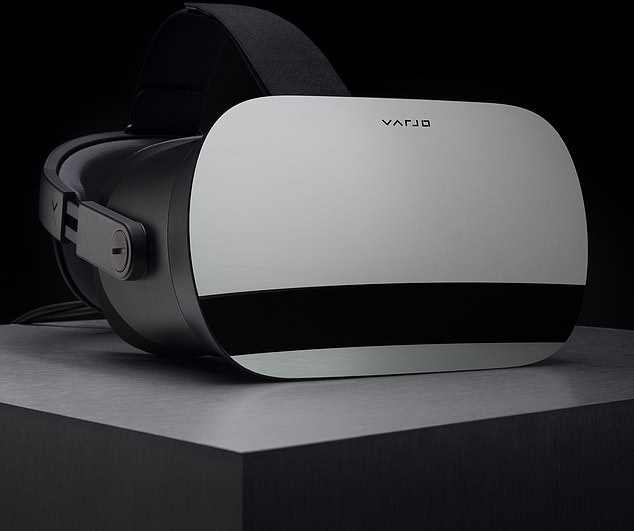A Finnish start-up has developed a virtual reality headset with resolution so sharp that it claims will be like looking at the world through a pair of human eyes.
Varjo launched the headset with the aim of revolutionising the use of VR in industries such as architecture and design, aerospace and automotive. Among its early access partners is the UK architect Foster & Partners.
Varjo has billed the VR-1 as the “world’s only” VR device with human-eye resolution.
The $5,995 (£4,600) VR headset is compatible with popular design programmes including Autodesk software.

The Tulip: a new public cultural and tourist attraction proposed for the City of London. Foster + Partners was a Varjo early access partner for VR-1
The headset has a resolution of over 60 pixels per degree, which the company says is 20 times greater than any other VR headsets currently available. This is possible due to the VR-1’s “bionic display”, which is a micro LED screen with 3,000 pixels per inch. Essentially, the pixels are so small they are practically invisible to the human eye.
The Helsinki-based company says the benefits for architects and designers are that it allows every detail, shape, shadow and colour of a design come into never-before-seen 20/20 focus, allowing complete immersion in a fully realistic spatial environment.
Varjo claims that designers will be able to see everything from extremely large environments to spaces in room scale to the tiniest details – all in human-eye resolution.
“Seeing and experiencing an unbuilt space with complete photorealistic clarity saves countless hours spent on traditional modelling, allows you to address constructability and installation issues before they happen, and can potentially save millions,” says the company. “And it allows the limits of creativity and innovation in architecture, engineering and construction to be pushed to new heights.”
As well as Foster & Partners, Varjo has collaborated with AirBus, Audi, Bohemia Interactive Simulations and Volkswagen and Volvo, to optimise the VR-1 for their respective use-cases.
Varjo claims that another feature of headset is the proprietary 20/20 Eye Tracker, which it claims is the most advanced and powerful stereo eye tracking technology ever integrated into a VR headset – delivering unmatched precision and accuracy for interactivity, data collection and analysis in human-eye resolution.
Later this year, Varjo will introduce a mixed reality add-on to the VR-1, enabling seamless transition between real, virtual and augmented content.

Varjo has billed the VR-1 as the “world’s only” VR device with human-eye resolution
“The entire Varjo team has been hard at work for two-plus years to make nothing less than the best headset on the planet,” said Urho Konttori, co-founder and chief product officer of Varjo. “Nothing has been left to chance, nothing has been compromised and we are delighted that the response from our partners has been overwhelmingly positive.”
“Varjo is pushing the boundaries of what’s possible in VR fidelity,” said Timoni West, director of XR desearch at Unity Technologies. “The text quality, combined with eye tracking, makes this the first headset to move us closer to virtual reality feeling real.”
Varjo photorealistic virtual workflows are delivered thanks to the device being able to support a number of major professional 3D software tools and engines, including Autodesk.
“We are proud to announce the support of Varjo VR-1 for Autodesk VRED software, the leading product visualization and prototyping application for automotive designers and engineers,” said Lukas Fäth, product manager at VRED, Autodesk. “Combining the world’s first human-eye resolution VR product with the VRED high-fidelity rendering allows our joint customers to experience and evaluate virtual prototypes with an unprecedented level of detail and realism.
“This is another great step towards holistic digital product review by enabling proper VR HMI experiences within the digital prototype of a vehicle.”












